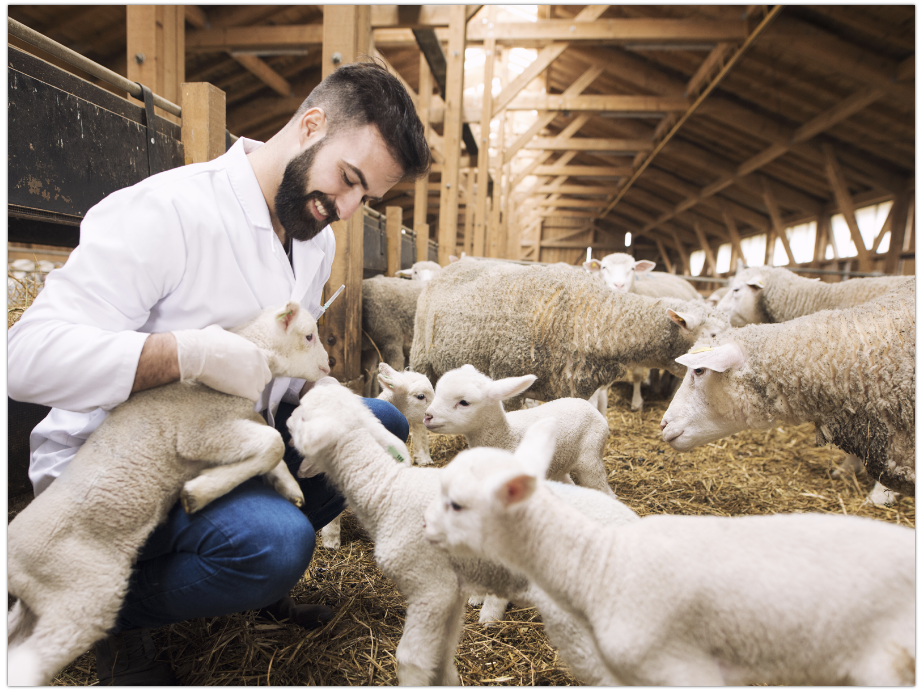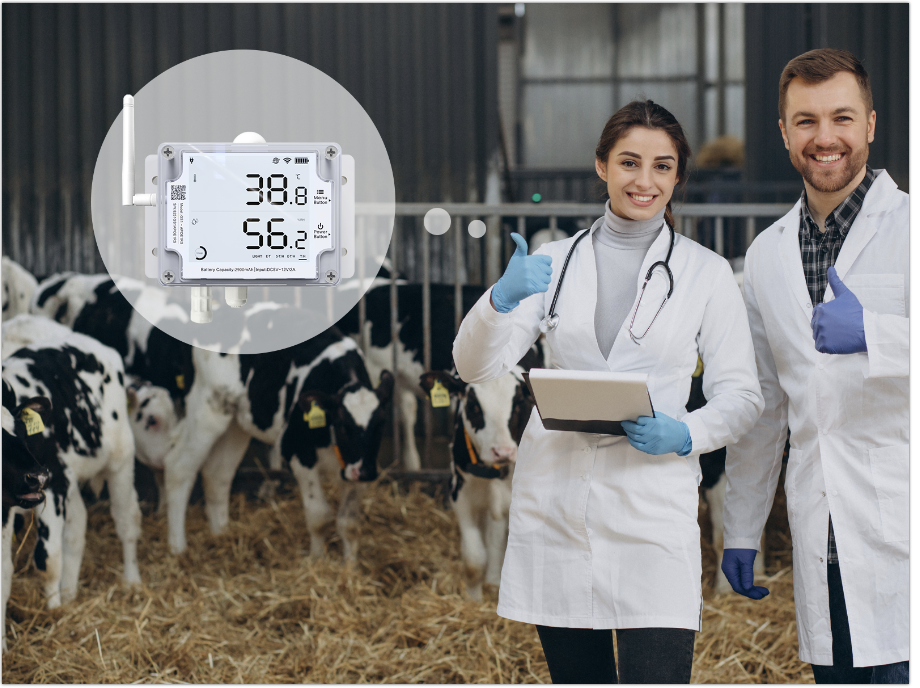The importance of monitoring the environment in intelligent livestock farming.
Posted by Chris E Wang on Feb 23rd 2023
Discover the significance of monitoring the environment in livestock and poultry farming and the consequences of not meeting the environmental requirements. Environmental quality is crucial for livestock and poultry housing as it can significantly impact the health of the animals.

Failure to meet the environmental requirements can lead to negative consequences not only for livestock and poultry but also for their overall health. Poor air quality can cause the spread of infectious diseases among the animals.
Environmental Effects on the Livestock and Poultry Industry
The Livestock and Poultry Industry is under immense pressure to improve their production processes, animal welfare, and environmental quality due to the increasing demand for animal food production. The production of animal food has increased significantly in the past century, resulting in the death of over 6 million animals and more than 56 billion mammals and birds each year.
Caring for livestock and poultry is a challenging task that requires farmers to fulfill certain requirements before starting. Failing to meet these requirements can result in issues such as unpleasant odors, pesticide drift, and damage to the environment. By meeting these requirements, farmers can mitigate potential problems and ensure the well-being of their livestock and poultry.
Housing
Providing shelter to farm animals is crucial to protect them from environmental factors. While poultry should have access to free-range, they also need shelter during adverse environmental conditions. Contrary to popular belief, summer can be more challenging for farm animals than winter, making shades essential for animals kept outside. For animals housed in barns, proper ventilation is crucial to maintain a suitable environment.
What Are The Best Environmental Conditions for Livestock and Poultry?
To ensure the well-being of livestock and poultry and prevent the spread of infectious diseases, farmers should prioritize providing the best possible environmental conditions for the animals.
Air Quality for Livestock
Allowing for natural ventilation is the optimal method for providing fresh air to livestock, but it requires an open shelter. If the shelter is enclosed, farmers should use fans and ventilation systems to ensure proper air circulation. The air quality in livestock housing has a significant impact on the animals' health and production performance. Livestock produces high concentrations of gases, which, when exposed to for extended periods, can harm the animals and the farmers. The dust in animal buildings contains fungi, bacteria, and antibiotic residues that can contaminate the water, soil, and air quality. To achieve ideal air quality, the livestock's living space should be continuously monitored, and any issues should be addressed quickly to prevent negative impacts on animal health.

Air Quality for Poultry
Poultry may be more resilient, but it's still necessary for them to have good air quality. In fact, air quality is crucial for all living creatures. Poultry farms can harbor harmful particles, microorganisms, and spores, which can cause diseases and even fatalities among the birds if not properly controlled. The most effective way to prevent any negative impacts is to ensure proper air ventilation. Ventilation is also essential for regulating temperature and humidity.
Temperature
Maintaining a regulated temperature is crucial for the welfare of livestock and poultry. High temperatures can have adverse effects on the animals' production and fertility, and even lead to health problems. For instance, high temperatures can cause a decrease in milk production by up to 30%. Farmers must ensure that the temperature in the animals' surroundings is controlled to avoid any such issues. The optimal temperature range for livestock is between 0°C and 18°C, and anything above or below this range can negatively impact the animals' health.

In comparison to livestock, poultry are more resistant to freezing temperatures but prefer a warmer environment. The optimal temperature for poultry is between 20°C to 25°C, and even though they can withstand colder temperatures, farmers need to keep them warm and dry. If the temperature is too high, it can lead to a decrease in egg production, poor quality eggs, and reduced appetite among the poultry.
Why is Intelligent Livestock Farming Environmental Monitoring Important?
Intelligent monitoring of the environment in which livestock and poultry live is crucial as it provides farmers with accurate information about the conditions. By utilizing this monitoring system, farmers can identify areas that need improvement and those that are already satisfactory. This approach can help farmers enhance the living conditions of their animals significantly, resulting in healthier animals and the prevention of diseases.
How Can UbiBot Help?
UBIBOIT GS1 carries out and collects all environmental information in the barns. GS1 is extremely beneficial for farmers because it can measure and monitor the barns’ temperature, humidity, and light.

The GS1 monitoring system provided by UbiBot goes beyond just monitoring temperature and humidity. It also tracks carbon dioxide levels and wind speed. The system is made up of monitoring nodes and a wireless sensor network that collects environmental data and uploads it to a cloud platform. This allows breeders to monitor all of the environmental values and make adjustments as needed.

